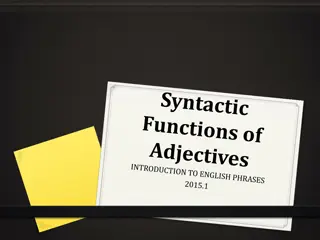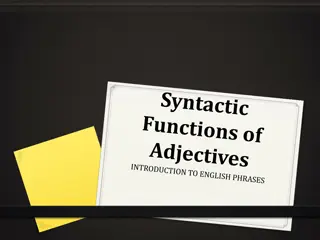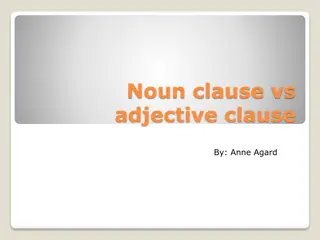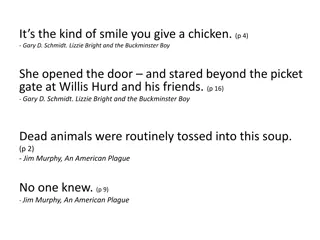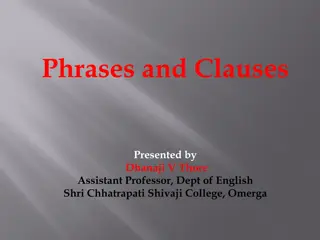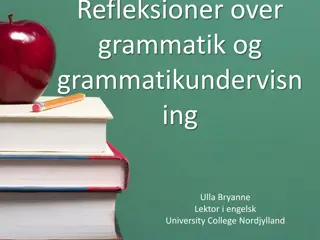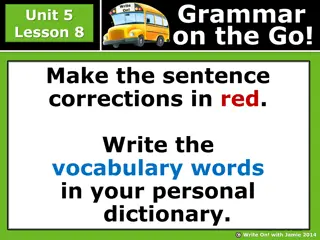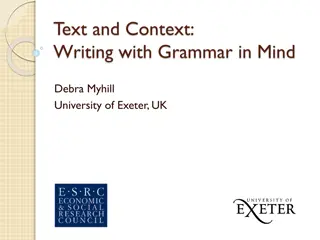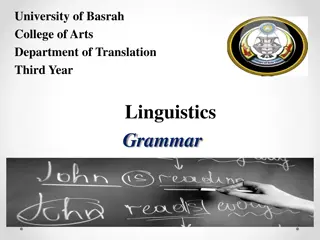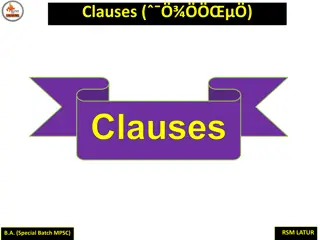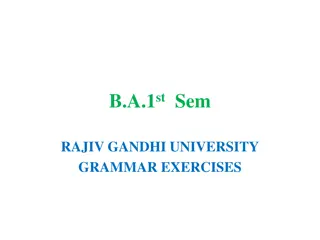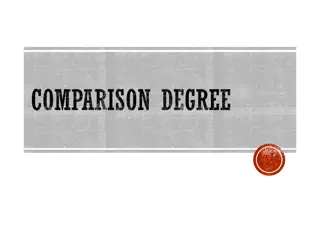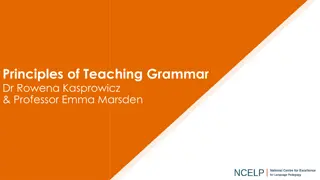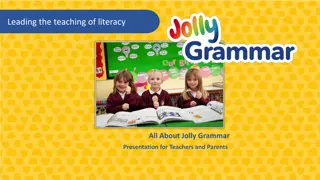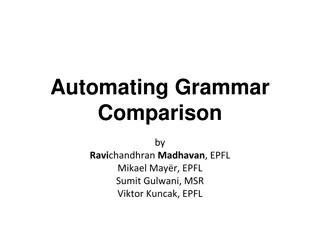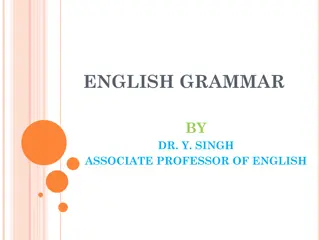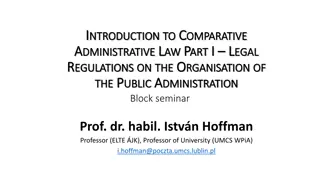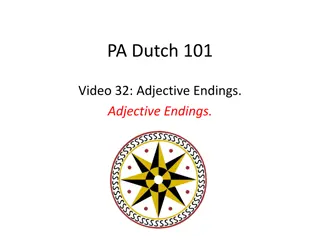Understanding Adjective Comparison in English Grammar
Explore the rules for forming comparative and superlative forms of adjectives in English grammar. Learn about irregular comparisons, one-syllable adjectives, adjectives ending in -y, -ow, -le, -er, multi-syllable adjectives, hyphenated adjectives, and more. Discover the nuances of adjectives with one vowel and one consonant, those ending in -e, and adjectives that take the -er form. Gain insights into participle adjectives, superlatives, and the use of more/most with two-syllable adjectives. Enhance your understanding of adjective comparison with practical examples.
Download Presentation

Please find below an Image/Link to download the presentation.
The content on the website is provided AS IS for your information and personal use only. It may not be sold, licensed, or shared on other websites without obtaining consent from the author. Download presentation by click this link. If you encounter any issues during the download, it is possible that the publisher has removed the file from their server.
E N D
Presentation Transcript
One-syllable adjectives Irregular comparison Two-syllable adjectives finished in: - y - ow - le - er Two-syllables adjectives: er/est or more/most. Three or more syllables adjectives. Hyphenated adjectives and compounds. More and most with short adjectives. Comparative and superlative adverbs.
Most adjectives: * *old old older older oldest oldest * *tall tall - -taller taller - -tallest tallest Adjectives ending in e: *late *late - -later later - -latest latest One vowel + one consonant: double consonant. * *fat * *thin fat - -fatter fatter - -fattest fattest thin - -thinner thinner thinnest thinnest
Good Bad Ill Old Far Little Much Many Few better worse worse older/elder farther/further farthest/farthest less best worst oldest /oldest least more fewer less most fewest least
They normally take the er form, specially adjectives ending in unstressed vowel: * *pretty * *narrow *simple * *clever * *quiet er and est est comparative pretty narrow *simple clever quiet - -prettier - -narrower - -simpler - -cleverer - -quieter prettier narrower simpler cleverer quieter - -prettiest - -narrowest - -simplest - -clevest - -quietest prettiest narrowest simplest clevest quietest
Others, particularly participial adjectives formed with - -ing in - -ious superlatives with more ing and - -ed ful form their comparatives and more and most: ed and those ending ious and - -ful most: *boring *worried *anxious *careful *boring *worried *anxious *careful more boring more worried more anxious more careful more boring more worried more anxious more careful most boring most worried most anxious most careful most boring most worried most anxious most careful
With some two-syllable adjectives er more/most er/ /est est and more/most are both possible: The commonest drink in Poland is vodka. est /most common most common alcoholic He is more pleasant/pleasanter when he has not been drinking. more pleasant/pleasanter to talk to In general, the structure with more/most is becoming more common. In case of doubts, check a good dictionary.
Three or more syllable adjectives take more or most in the comparative and superlative except for two-syllable adjectives ending in - - y y and prefixed with un *reasonable more reasonable most reasonable *beautiful more beautiful most beautiful *unhealthy unhealthier unhealthiest *untidy untidier untidiest un- -: *reasonable more reasonable most reasonable *beautiful more beautiful most beautiful *unhealthy unhealthier unhealthiest *untidy untidier untidiest
Hyphenated adjectives, which are also known compound adjectives, normally use more most forms: You are more Some compounds adjectives have two possibilities: good looking more good-looking most good-looking more and most for the comparative and superlative more sun sun- -tanned tanned than I am. better-looking best-looking
More is normally used when a comparative is not followed inmediately by than. Forms with er are also possible: The road is getting more and more steep. steeper and steeper. Most in formal style followed by adjectives means very . That is most kind of you.
Most of them are made with more and most: Could you talk more quietly? Adverbs with the same form of adjectives, have comparatives and superlatives with er and est. The most common are: fast, early, late, hard, long, near, high, low, soon,well (better, best),badly (worse, worst), etc Can t you drive any faster? Talk louder Can you come earlier?
More than. Less ... Than. As as/as much as/as many as. Half, twice, three times as as. -er/more and er/more. The er/more , the er/more.
A big difference: Much Far Nowhere Considerably less Not A great A small difference Almost as + adject + as Nearly as + adject + as Slightly er/ more adject than Not quite as + adject + as A bit/a little er/more adject than No difference Just as + adject + as Not any er/more adject than No er/more adject than -er/more than -er/more than near Mucho m s que De lejos m s que Ni de cerca tan como Considerablemente menos que Ni con mucho tan como Much simo m s que as as than as as nearly deal -er/more than Casi tan Ligeramente m s que No exactamente tan como Un poco m s que como Justo tan como No es mucho m s que No es m s que
-est/most ... in/of * In with singular words referring to a place or group. Of before plural and lot . She is the fastest player in the team She is the fastest player of them all She is the best of the lot


